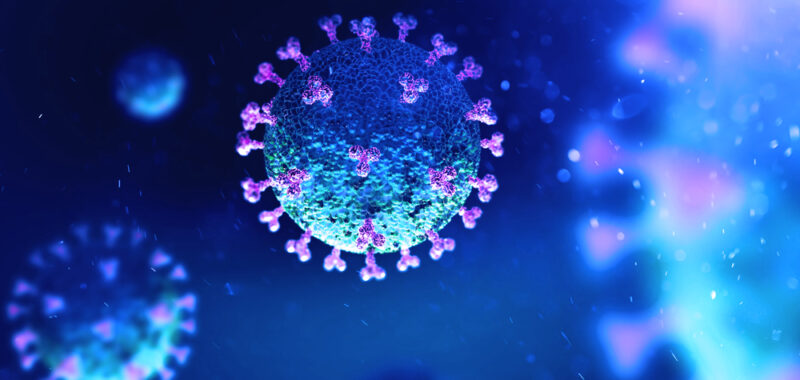An excerpt from The Mumbo Jumbo Fix: A Survival Guide for Effective Doctor-Patient-Nurse Communication.
If you’re like me, you mark life’s timeline by three milestones—before COVID, during COVID, and after COVID. While most of us no longer wear masks or maintain social distance, the world has undeniably changed in ways that impact health care communication among its three essential participants: doctors, patients, and nurses.
Telemedicine, the remote electronic interaction between health care providers and patients, has exploded across all health care disciplines. It was triggered by medical necessity and the government’s population lockdown. Going to “visit” the “doctor” is no longer always literally true. With the expansion of telemedicine came some temporary relaxation of privacy encryption requirements and a streamlined pathway for physicians to practice across state lines. Currently, forty states and the District of Columbia are signatories to the Interstate Medical Licensure Compact, which significantly eases the licensing process for physicians who want to practice in multiple states, although HIPAA encryption requirements are again in full force. While telemedicine’s usage has somewhat declined with the return to “normalcy,” electronic health care holds the promise of more affordable and accessible services. But new technologies always present new communication challenges to unschooled providers and patients.
The shortage of physicians, not just in rural or underserved communities, has resulted in expanded use of “physician extenders”—non-physicians like physician assistants and nurse practitioners—with increased medical responsibilities. The trend in some states, like California, is to offer a path for nurse practitioners to work independently, no longer under any supervision of a licensed medical doctor. With these changes comes potential consumer confusion about who patients see and the scope of the provider’s license to practice. A “doctor of nursing practice” is not a “medical doctor” and does not have the same number of required years of education or clinical experience.
Nurses and other first responders were the undeniable heroes of the pandemic. But many burned out and left the profession, accelerating a pre-existing trend among our aging nurse population. The shortage of nurses and physicians has furthered the importation of more foreign-born and educated providers, with the associated potential communication challenges.
The pre-pandemic trend toward the consolidation of health care systems and medical practices has intensified, resulting in higher patient costs with mixed impacts on quality of care. Many communities have lost their local hospital. Health care is being delivered by a dwindling number of health care organizations. More care is being delivered in outpatient settings. And, of course, this care is being delivered to a rapidly expanding elderly population with more health and communication challenges.
Amidst all of these developments, some sobering truths remain unchanged. Medical errors, so-called “adverse events,” are not decreasing. Most are caused by communication failures. They are the third leading cause of death in the United States. According to a 2023 article by Dr. Bates and his colleagues in the New England Journal of Medicine, adverse events occur in nearly one in four admissions, and approximately one-fourth of the events are preventable. Medical errors in hospitals are actually underreported, and little attention has been focused on the volume of errors in the more common outpatient clinical settings.
Also, what has not changed is the exclusion of patients from health care communication education. While we do an admirable job educating patients about wellness and their diagnosed diseases, little is done to train patients on how to communicate in the baffling world of health care. Doctors still write communication books for doctors, nurses write for nurses, and almost no one writes for patients. And certainly, no one includes all three of the essential participants in a single volume grounded in solid communication theory and “boots on the ground” experience. If we seriously expect to reduce communication-caused patient harm, each essential participant needs to understand the unique communication challenges the others face.
My professional life as a medical malpractice trial lawyer defending health care providers and as a hospital risk manager and patient safety officer tasked with keeping patients safe by investigating medical errors and creating effective corrective action plans has taught me this truth: we must educate and empower patients. Fewer medical errors will occur if patients are taught the skills to hold busy providers’ feet to the fire by quietly insisting that established procedures be followed, like hand hygiene, patient identifiers, medicine reconciliation, bedside handoffs, and informed consent protocols. Correct diagnosis and appropriate treatment are dependent on the patient’s ability to communicate an accurate medical history and specific details about their chief complaint. Patients will receive better care if they learn good listening and speaking skills, as well as develop an awareness of barriers to their own understanding.
In the aftermath of COVID, I and many others have perceived a growing intolerance of rules and regulations that restrict individual freedom, a skepticism of “expert” opinions, and a coarsening of private and public discourse. It is anyone’s guess how long these shifts in attitudes and behaviors will last. But each of these developments is an impediment to effective health care communication and better patient outcomes.
Michael J. Grace is an attorney and author of The Mumbo Jumbo Fix: A Survival Guide for Effective Doctor-Patient-Nurse Communication.



